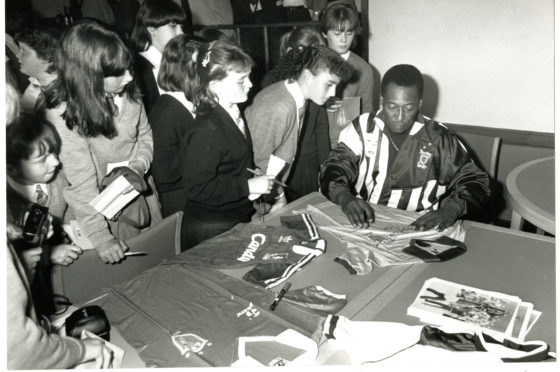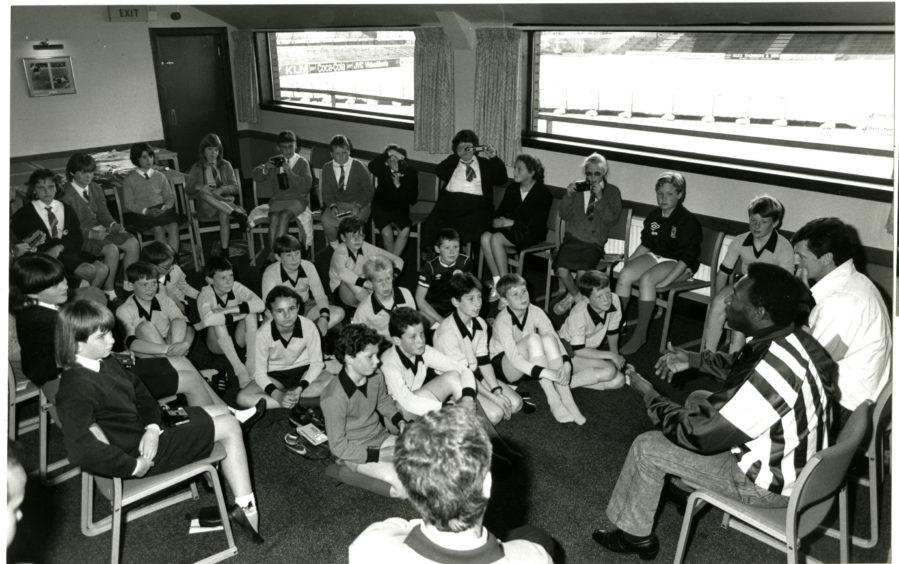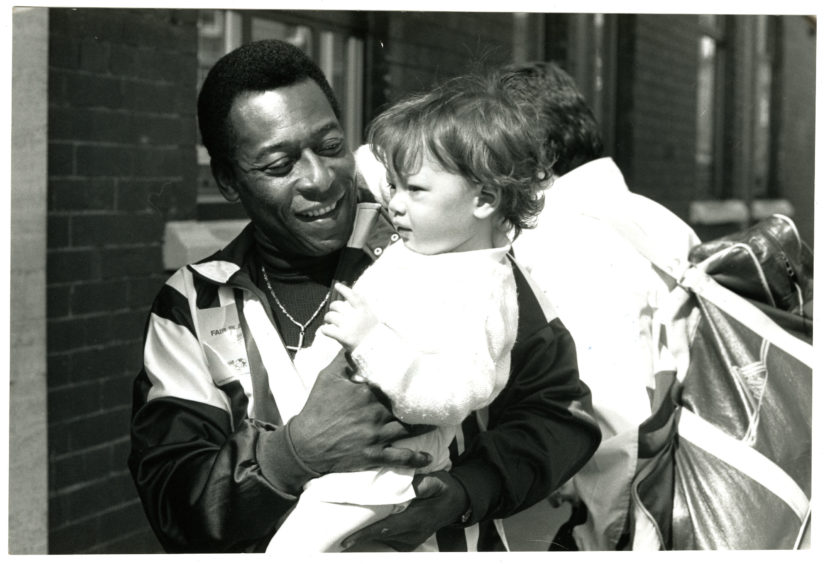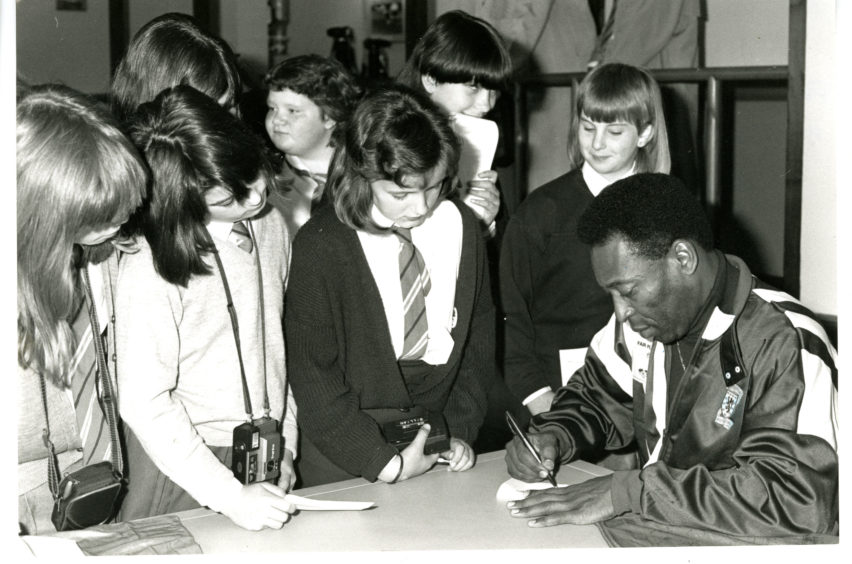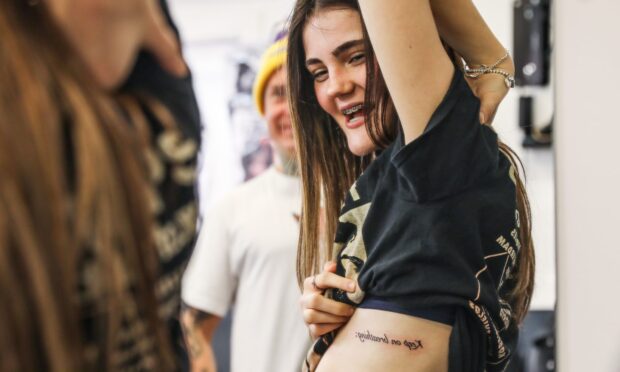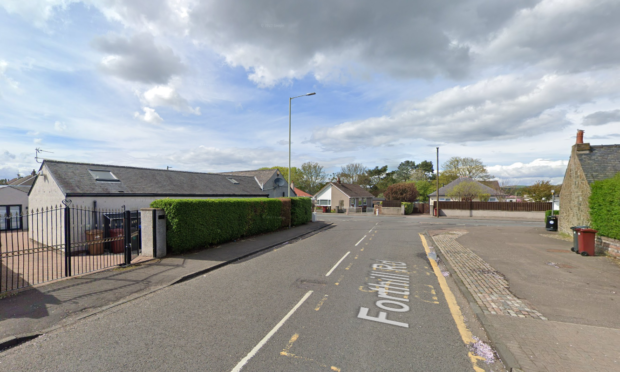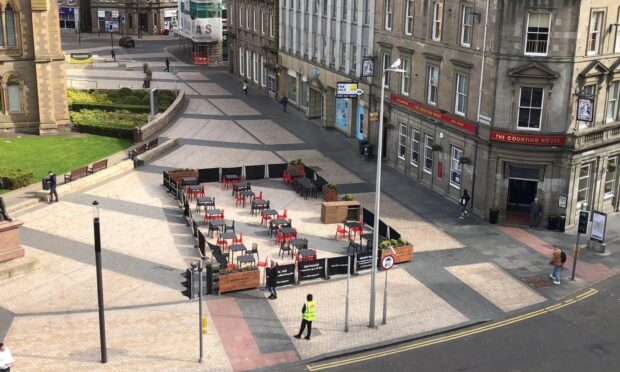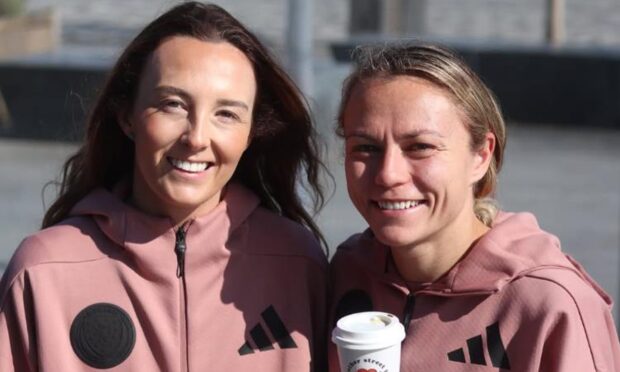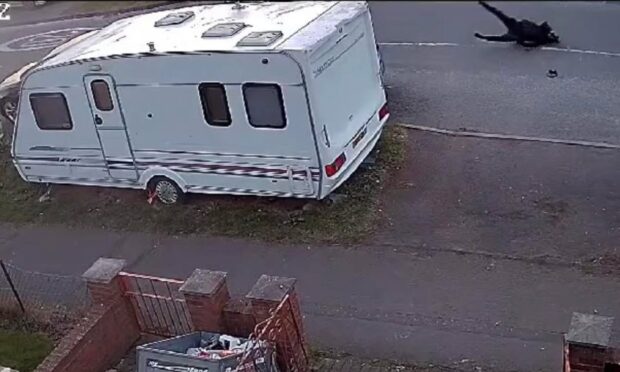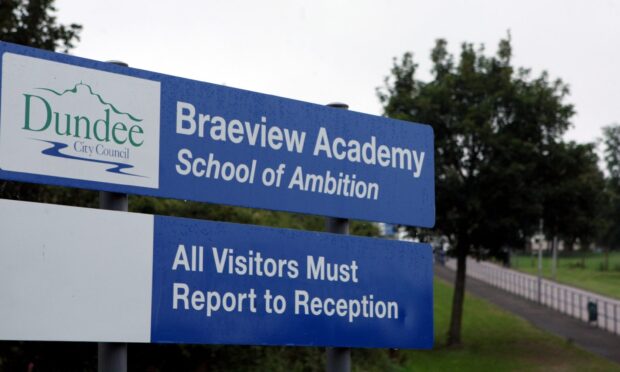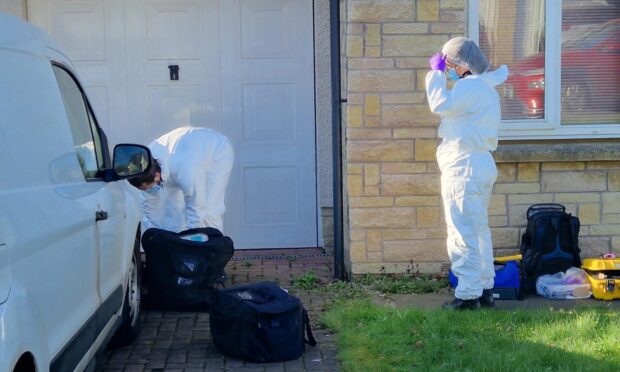It was the day the world’s greatest football player swapped Rio de Janeiro for the Hilltown.
Brazilian superstar Pele arrived at Dens Park 30 years ago in June 1989. The stadium was hosting Group C matches in the under-16 FIFA World Cup, featuring Argentina, Nigeria, Canada and China.
The 1958, 1962 and 1970 World Cup winner signed autographs and spoke to school children, including pupils from Hill Primary in Blairgowrie, alongside Scotland manager Andy Roxburgh before one of the games.
The FIFA ambassador also showed off his skills with a game of keepy-uppy on the Dens Park pitch despite wearing jeans and Cuban heels below his Scotland tracksuit top.
It wasn’t just the youngsters that were left awe-struck by the appearance of the man who scored 1,281 goals in 1,363 games during a career spanning 21 years at the top of his game.
Dundee journalist John Brown was covering the tournament and told how he made sure he didn’t miss the chance to meet, arguably, the greatest player to have ever graced the game.
“I attended Dens Park in 1989 when the under 16 World Cup was being held in Scotland,” said John.
“The great Brazilian Pele was at the match involving Nigeria at Dens in his then capacity as a FIFA ambassador.
“After the game, he came under the stand to meet the ballboys and ‘high-fived’ each one.
“I was standing behind the last boy and instinctively stuck up my hand. Pele looked me in the eye, smiled and slapped my hand.
“It was a priceless moment and something I’ll never forget.”
Saudi Arabia defeated Scotland in the final to win the tournament, which was held in Glasgow, Edinburgh, Motherwell, Aberdeen and Dundee.
They became the only Asian men’s football team to win any FIFA tournament but was later accused of fielding several over-age players, although no formal investigation was conducted.
Pele was born Edson Arantes do Nascimento and became a superstar with his performance in the 1958 World Cup aged just 17.
He played professionally for Santos in Brazil for two decades, winning three World Cups along the way, before joining the New York Cosmos late in his career.
Former Dundee striker Jocky Scott almost stole the show as Pele played his final competitive game in 1977 in America.
Pele visits Dens Park, Dundee. (1989)
Picture: DC Thomson pic.twitter.com/l33R6sERPH— PictureThis Scotland (@74frankfurt) December 9, 2016
Jocky was part of the Seattle Sounders team that, despite being underdogs, came close to upsetting the party.
Pele’s swansong could have ended on a very different note when they played against each other at the Soccerbowl which was the then big-spending NASL’s version of the Superbowl.
With the scores level, Jocky hit the bar and Tommy Ord scored from the rebound which was chalked off for offside.
New York Cosmos went on to win the final 2-1 to mark the grand finale of a global icon in fairytale style.
Named FIFA co-Player of the Century in 1999, he is a global ambassador for soccer and other humanitarian causes.
What became of the people we used to be?
Scotland qualified automatically as hosts, and finished second in the group.
A late 1-0 win over East Germany in the quarter-finals set up a semi-final showdown with Group D champions Portugal which included Luis Figo.
Despite leading Saudi Arabia 2–0 in the final after goals from Ian Downie and Paul Dickov, the match finished 2–2 after extra time. and Scotland lost the subsequent penalty shoot-out in front of over 50,000 fans at Hampden Park.
The Scotland squad featured a number of players who would go on to win full Scotland senior caps including Paul Dickov, Brian O’Neil and Andy McLaren.
Kevin Bain, Gary Bollan, Neil Murray, David Hagen and Scott Marshall would also go on to play in the professional ranks.
The under-16 manager Craig Brown would take the under-21s to the semi-final of the European Under-21 Championship just three years later.
In December 1993 he was officially appointed Scotland manager having taken temporary charge for games against Italy and Malta.
As manager, Brown took Scotland to Euro 96 and the 1998 World Cup.
He is the senior selection’s longest tenured boss ever.
